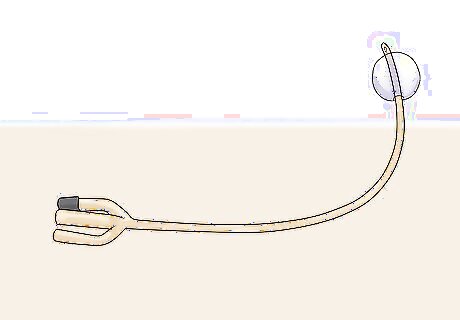
views
Inducing Labor at Home

Have sex. Having intercourse can help induce labor. Sperm contains prostaglandin, which can actually cause the uterus to contract and stimulate labor. There's one caveat: Don't resort to this remedy if your water has already broken. Once the amniotic sac has ruptured, you run the risk of infection. Otherwise, you can try this method to your heart's content.

Try a breast massage. Nipple stimulation can release the oxytocin, which is part of the hormonal cocktail that starts contractions. Do massages for 5 minute periods throughout the day. Breast stimulation won't start labor. But if the cervix is already ripened, it can speed it up. Don't go overboard on this one — overstimulation can result in contractions that are too strong.

Take a walk. The gravity of your upright position and the side-to-side sway of your hips when you walk helps your baby get into the birthing position. Walking can also assist in speeding up labour if you're already having contractions. Avoid exhausting yourself. Remember, labor is a physically demanding process. Save up your energy so that you're not worn out before the real work begins.

Know what doesn't work. There are a lot of urban myths surrounding what will and won't induce labor. Here's a quick rundown of what you shouldn't try: Castor oil, which will irritate the gastrointestinal tract. You won't go into labor, but you might feel sick to your stomach. Spicy food. No scientific evidence supports a connection between eating spicy foods and starting contractions. Certain herbs, like cohosh or evening primrose oil. These haven't been studied enough to safe, and herbs with compounds that imitate hormones may actually be harmful. Talk to your doctor before you attempt using any herbal supplements.
Medically Inducing Labor

Have your membranes stripped or swept. The doctor inserts a gloved finger into your uterus, and sweeps it around the wall of the uterus, separating it from the amniotic sac. This is an outpatient procedure that can be done in your doctor's office, after which you'll go home and wait for labor to progress. You might experience some menstrual spotting in the meantime, so don't be alarmed. Contact your doctor if the flow becomes heavier than a usual period. This is the only labor-inducing procedure that isn't performed in a hospital. Everything else listed in this section is done under close medical supervision, with the expectation that you'll be giving birth within hours.

Take medication to soften and efface the cervix. If you haven't yet experienced the physical changes to your cervix that mean labor is imminent, your doctor can administer a few different medications that might do the trick. These compounds imitate the hormones that initiate labor: Misoprostol, which can be taken orally or vaginally. Dinoprostone, which is taken as a vaginal suppository. Oxytocin (Pitocin), which is administered intravenously. Labor aided by oxytocin can progress even more quickly than natural labor, especially in first-time mothers. Be aware, though, that fetal distress is a risk with this medication, and might lead to a hasty C-section.

Request a Foley catheter to open the cervix. If you'd rather not go the medication route, your doctor can physically coax the cervix to open with a balloon catheter. A small tube with an deflated balloon at the end is inserted into the cervix, and the balloon is inflated. A balloon catheter is left in place until the cervix has dilated enough for it to fall out, usually around 3 centimeter (1.2 in).

Have your water manually broken. An amniotomy, in which the doctor gently breaks the amniotic sac with a sterile plastic hook, is usually done when the cervix is open and the baby is in place, but your water hasn't broken on its own. Your doctor will closely monitor your baby's heart rate, and make sure you don't experience umbilical cord complications.
Knowing the Risks

Know that most doctors won't induce early without a medical reason. Elective inductions are rare, and most only occur after 39 weeks. Your doctor might consider it if you live so far away from a hospital that you might not be able to get help in time for a natural labor.

Know that medically valid reasons for inductions vary. The most common ones are: Your due date passed one or two weeks ago, and your water hasn't broken. At this point, damage to the placenta is a bigger risk than inducing labor. You have a condition that makes continuing the pregnancy dangerous, including pre-eclampsia, high blood pressure, gestational diabetes, or lung disease. Your water broke over 24 hours ago, but you haven't experienced contractions.

Be aware of potential complications. Inducing labor doesn't mean you'll automatically encounter these complications, but your chances do go up. However, if you're giving birth in a hospital or birthing center, your medical team knows about these risks and will be prepared to handle them. You're more likely to need a C-section. If you start induction and it goes nowhere, a C-section becomes more appealing (and perhaps necessary). Your baby might have a lower heart rate. Some of the medications used to increase contractions can affect your infant's heartbeat. You and your baby are at a higher risk of infection. You might experience umbilical cord prolapse. That is, the umbilical cord might slip into the birth canal before the baby does, which can cause oxygen supply problems. You're more likely to experience significant bleeding after delivery.
















Comments
0 comment